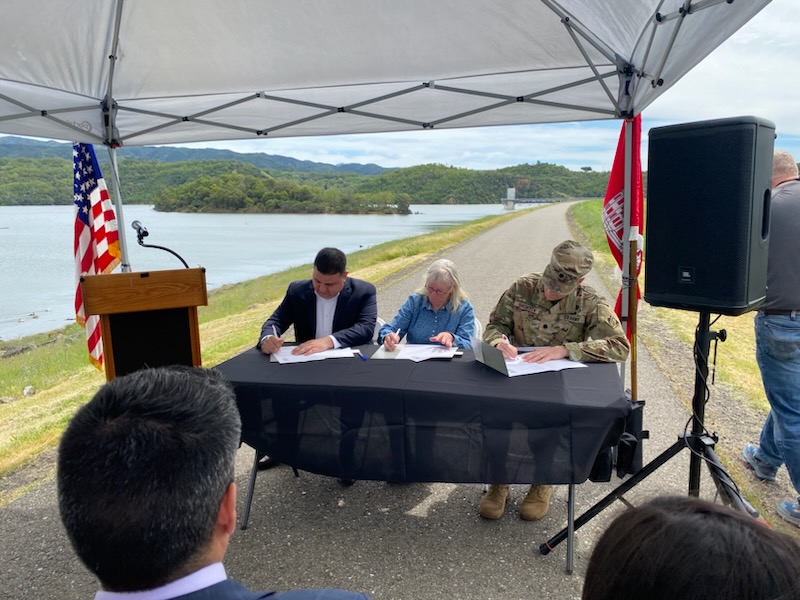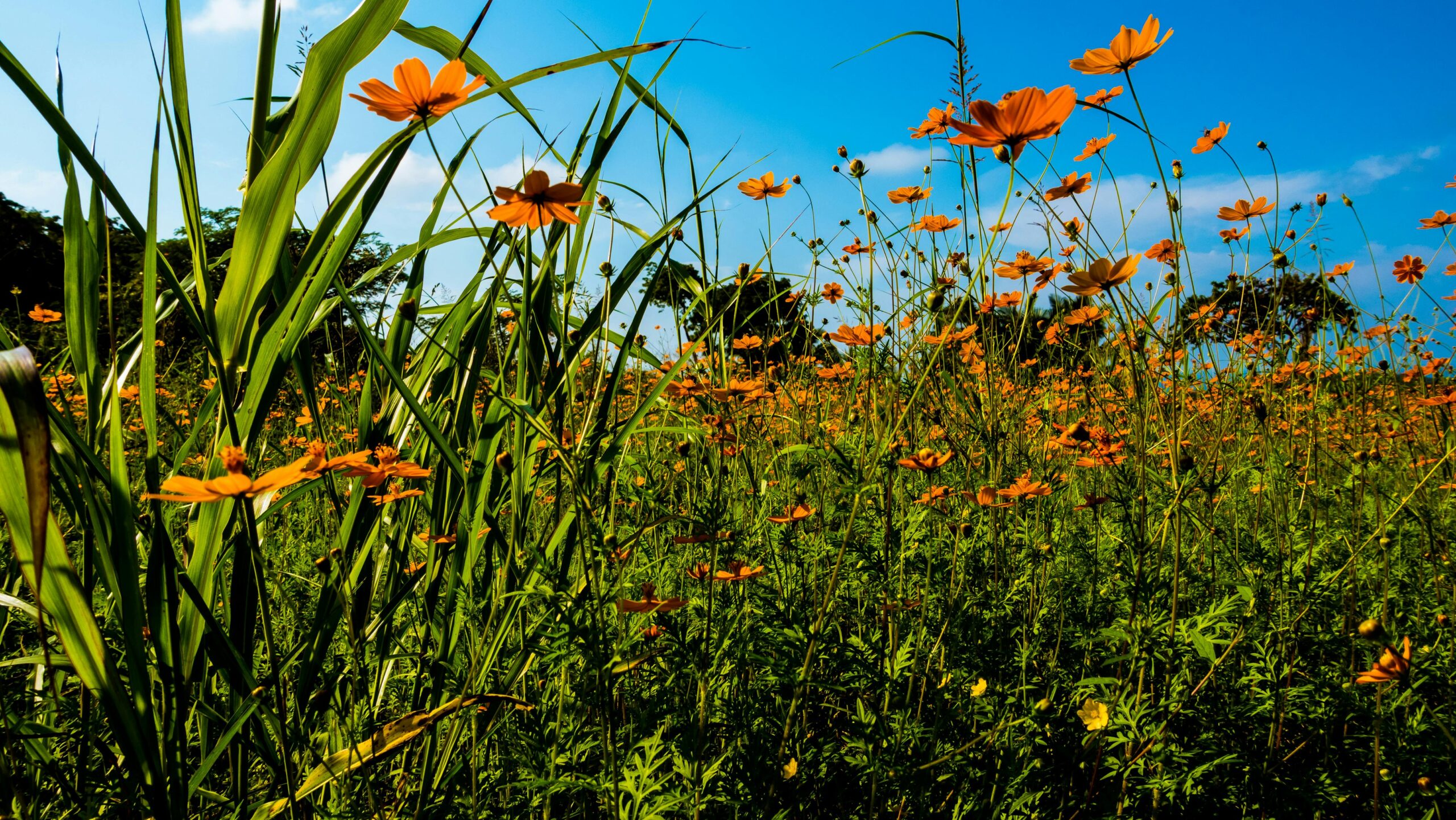The Wildlife of Russian River

The Russian River watershed provides food and shelter for many species of invertebrates, reptiles, amphibians, mammals and birds. Wildlife communities in the watershed are an important part of the ecosystem and its health. Presented below are some of the common, endangered, and unique animals living in our watershed.
Invertebrates
Macroinvertebrates are defined as animals that do not have a backbone, and are big enough to see with the naked eye. They include insects, arachnids, crustaceans, annelids, and mollusks. These small animals are of extreme importance to the overall health of the Russian River watershed, for they are the link in the food web between the producers (algae and plants) and consumers (fish, amphibians, reptiles, and mammals). The presence of freshwater macroinvertebrates in the waters of the Russian River watershed is an important indicator of water quality. They are very sensitive to physical and chemical changes, providing advance warning of pollution problems. By consuming bacteria and decaying plants and animals, macroinvertebrates help maintain the health of the ecosystem. Many filter feeders such as freshwater mussels supply an extremely valuable natural filtering service. Threats to all of these creatures include pollution, sediment loading of the gravel river bottom, introduced species of fish, and other human impacts. For more information on these small creatures, take a look at a great resource from Stroud Water Research Center, for identifying different macroinvertebrates that you might see in the Russian River.
Some aquatic insects live in an aquatic habitat for only part of their lives and are terrestrial during their adult life, where they live primarily in riparian areas. Common stream macroinvertebrates include larval and nymph stages of the mayfly, dragonflies, damselflies, stoneflies, and caddisflies. They are a food source in all life stages for larger animals in both aquatic and riparian areas. Adult insects constitute a substantial percentage of the arthropod biomass and numbers near streams. Water Striders skim the surface of quiet sections of the river and its tributaries.
The Pipevine Swallowtail larvae feed on a distasteful host plant called Dutchman’s Pipe, which gives the adults an unpleasant flavor, causing birds to avoid it.
The California Freshwater Shrimp, Syncaris pacifica, is an endangered species that lives in coastal tributaries of the River, in quiet, low-gradient parts of tree-lined streams with underwater vegetation and tree roots. They are about the size of our pinky finger, look almost transparent, and move slowly to avoid predation from introduced fish like bluegill and bass. The U.S. Environmental Protection Agency has an informative write-up on these endangered species.
Fish
The Russian River and its tributaries are home to many species of fishes, some are native and some are introduced from other parts of the world. Prior to Western settlement and its subsequent impacts, the River was home to massive populations of salmon and steelhead. These fish are grouped together and commonly called “salmonids”, and they are anadromous (migrate to the sea for most of their adult lives). Coho Salmon are listed as federally endangered, and a great deal of human efforts are taking place to try and bring their numbers up. In addition, the Chinook salmon, Chum salmon, and Steelhead are salmonid species of special concern. Other fish species in the Russian River watershed include: Sacramento Suckers, Tule Perch, American Shad, Pikeminnow, Hardhead, Bluegill, Large and Smallmouth Bass, Catfish, Lamprey, and Carp.
Reptiles
Many kinds of reptiles live in the watershed including: blue-bellied fence lizards, alligator lizards, California king snakes, western rattlesnakes, and gopher snakes. Western pond turtles, Clemmys marmorata (California Species of Concern) are also residents of the watershed and can often be seen sunning themselves on rocks or fallen trees along the water’s edge. These turtles can be identified by their shell: look for networks of spots, lines, or dashes of brown or black that radiate from growth centers of each shield, and their heads have spots. Sometimes they are confused with Red-Eared Sliders, which have bright yellow stripes on their necks and red “ear” patches. Reptiles help keep insect and rodent populations in check, and in turn are eaten by large birds of prey or mammals.


Amphibians
Some very unusual amphibians live in the watershed including: western tailed frogs (California Species of Concern) – found in cold, swift-flowing mountain streams, California tiger salamanders (Federally Proposed for Listing/State Species of Concern) – found in the Laguna de Santa Rosa, and foothill yellow-legged frogs (California Species of Concern) that inhabit streams with gravel or sandy bottoms and sunny banks. Other more common amphibians include: Pacific Tree Frogs, Western Toads, Red-bellied Newts, Rough-skinned Newts and Arboreal Salamanders (Behler 1979). Like reptiles, amphibians also help control insect and rodent populations.
A Foothill Yellow-legged Frog keeps a watchful eye. The Red-bellied Newt has a relatively small range from Bodega to Humboldt. A Western Toad makes a rare appearance.
Mammals
There are many different species of mammals in the watershed. Some of the more common mammals include: California gray squirrels, California ground squirrels, black-tailed jackrabbits, coyotes, bobcats, mountain lions and white-tailed deer. People don’t often see some mammals because they are nocturnal, only coming out at night. Nocturnal species include: dusky-footed woodrats, opossums, striped skunks, western spotted skunks, raccoons, and gray fox (Sheldon 1998). There are a few non-native mammals that appear in the watershed as well, including: red fox, feral pigs and Norway rats (found mostly in urban areas). Mammals can be good indicators of an ecosystem’s health since they are high on the food chain.
Mountain lions are seldom-seen residents of the Russian River watershed. Harbor Seals can usually be seen at the rivermouth, at Jenner. River Otters are a rare treat to see.
Birds
Numerous species of birds live in the watershed and utilizie it for food and shelter during their annual migration, or using it for nesting during the breeding season. Birds commonly seen in the watershed include: great blue herons, snowy egrets, double-crested cormorants, mallard ducks, common mergansers, pied-billed grebes, turkey vultures, red-tailed hawks, northern harriers, osprey, red-winged black birds, scrub jays, plain titmice, warblers, barn swallows, and California quail (Sibley 2000). Birds help control insect and rodent populations, pollinate native plants, and disperse seeds from fruits. Tracking bird populations can be a good way to evaluate an ecosystem’s health.
Common Mergansers rest from fishing activities. Great Blue Herons are majestic in flight. Brown Pelicans and other seabirds can be viewed at the river mouth at Jenner.
Here is a great Sonoma County Bird Reference Guide Online
List of References:
Behler, John L. and F. Wayne King. 1979. Field Guide to North American Reptiles and Amphibians. Chanticleer Press, Inc. New York, NY.
California Department of Fish and Game (CDFG) 2004. California Natural Diversity Database (CNDDB). Sacramento, California.
Sheldon, Ian. 1998. Animal Tracks of Northern California. Lone Pine Publishing. Edmonton, AB, Canada.
Sibley, David Allen. 2000. National Audubon Society: The Sibley Guide to Birds. Chanticleer Press,Inc. New York, NY
(Courtesy of RRIIS, RRWC).
University of California, Division of Agriculture and Natural Resources: California Fish Website




